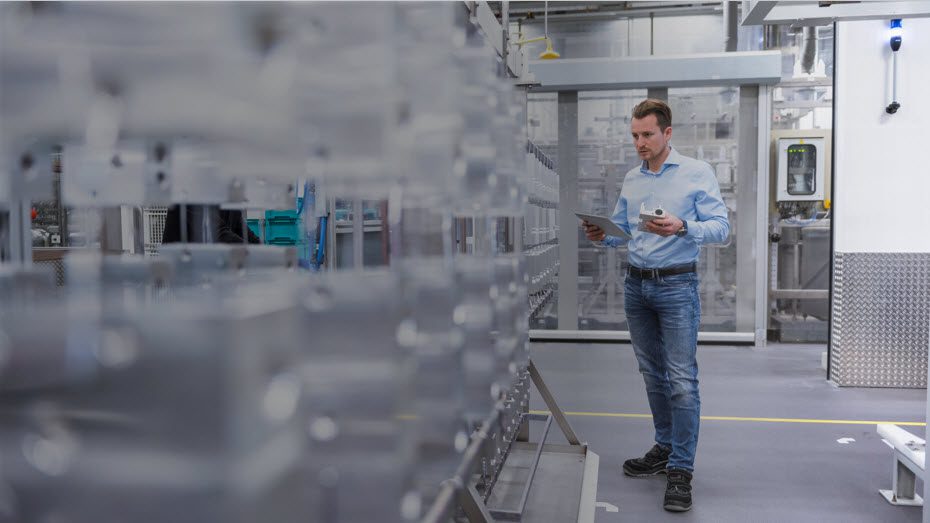 Across industries, the global pandemic has altered both consumer demand behaviors and the capabilities of manufacturers to deliver goods to the market. In order to adapt, many enterprises are rethinking the potential role of digitization and smart machines in helping them to redesign operations to be more agile. Manufacturing flexibility is key as it improves a firm’s ability to conduct faster manufacturing line setups and production changeovers to accommodate frequent and rapid market shifts. The challenge is to introduce these new capabilities without generating excessive costs and without investing in additional human resources.
Across industries, the global pandemic has altered both consumer demand behaviors and the capabilities of manufacturers to deliver goods to the market. In order to adapt, many enterprises are rethinking the potential role of digitization and smart machines in helping them to redesign operations to be more agile. Manufacturing flexibility is key as it improves a firm’s ability to conduct faster manufacturing line setups and production changeovers to accommodate frequent and rapid market shifts. The challenge is to introduce these new capabilities without generating excessive costs and without investing in additional human resources.
To support this change, both the OEMs–who design, commission, and support the machines that serve as the backbone of digitized industrial operations– and the end users–who operate these machines– will need to reassess how they apply digitization technologies to a less predictable “new normal”.
How Digitization Benefits the Entire Smart Machine Life Cycle
Establishing a solid infrastructure of more efficient, flexible, and agile machines implies integrating machines that are more digital, and that unlock new business potential and higher efficiency Improvements.
Listed below are three phases of the machine life cycle where digitizing operations frequently results in efficiency gains and a fast return on investment:
- Machine design – In the design and engineering phase, automated engineering and simulation capabilities are reducing time-to-market by up to 30%.
- Machine commissioning and operation – During these phases of the machine life cycle, OEM integration, commissioning and operational support efficiency can be improved by up to 40%.
- Machine maintenance and service – In this support phase, efficiency and agility are delivered through connected machines that enable remote access, predictive maintenance, and remote monitoring in a cybersecure environment. Such digitized support tools can reduce the time for corrective actions by up to 50%.
A digital approach to machine building and operations involves better connectivity, increased mobility, access to inexpensive cloud computing, and rich analytics. Digitization benefits include optimized use of resources and the ability to make smart decisions faster, while also improving serviceability to drastically reduce downtime.
How the End User Benefits: A Real-Life Smart Machine Example
One manufacturer of flexographic plates (plates used for printing purposes) identifies its marketplace differentiator as a combination of high-quality products and fast product delivery. In order to support these competitive advantages, the manufacturer requires that their machine OEM provides not only quality machine equipment, but also an exceptional service package. The manufacturer wants the OEM to “look over our shoulder” so that they can succeed in maximizing both plant uptime and product quality. The OEM fulfills this service requirement by remotely connecting into the manufacturer’s machines and monitoring machine performance. The remote connectivity allows the OEM to be able to remain highly available to the manufacturer, even during a very difficult period of pandemic disruption.
The machines run in a highly efficient manner with very little downtime since the OEM has remote access to rich machine performance data and can track machine parameters remotely on an ongoing, near real-time basis. The OEM also implements software tools that allow the simulation of the machine which can be enhanced through relevant machine data across its lifecycle. As a result, the OEM can predict when the machine might fail. Therefore, potentially problematic situations can be addressed ahead of time, minimizing any possible disruption to operations.
The machine data is captured and synchronized with cameras that are part of the machine configuration (along with the Schneider Electric Edge Box and EcoStruxure Machine Advisor asset management tools). The camera recordings are stored on premise on the Edge Box (a local server designed to work within industrial environments), creating real-time historian data. If a machine stops, the OEM can immediately restart the machine remotely and analyze the data later to determine the root cause of the interruption. This revolutionary approach is completely different from traditional situations where the machine remains down, held in an error state, waiting for an intervention on site to rectify the issue. The remote camera provides physical visibility to the machine throughout the various phases of its life cycle and can sync the machine operational parameters to any precise event to optimize machine performance efficiency.
For More Information
In order to succeed in this new, more dynamic and unpredictable environment, both OEMs and end users will need to develop new sets of skills. These skills should center on enabling higher operational agility and leveraging real-time demand intelligence to improve process visibility. The goal is to apply the benefits of digitization—faster cycle times, higher efficiency, lower cost, and better decision support—to the entire lifecycle of their machines.
Visit EcoStruxure Machine Advisor to learn how this digital platform can work to minimize manufacturer line changeover times and to simplify OEM machine life cycle management.
*******************
This message was part of our Innovation Summit World Tour 2020. Making 11 virtual stops around the world, we welcomed over 20,000 customers, partners and students through the virtual doors and into the discussion on how we can build a more resilient and sustainable future together.
If you want to discover more from the event, we invite you to read the following articles:
- Building Resilient and Sustainable Data Centers
- How digitization helps deliver healthier hotels–and happier guests
- Hospital resiliency during a pandemic—Expert Insights
- Expert Insights: Smart Building Technology Drives A Safer Workplace
- Benefits from the Promise of Next Generation Industrial Automation
- Securing the IT-OT Convergence for Cybersecurity Solutions
- Cracking Digital for An End-to-End Traceability Journey
- 5 ways IEC 61499 is liberating Industrial Automation
- Two technologies available today to resolve climate change



